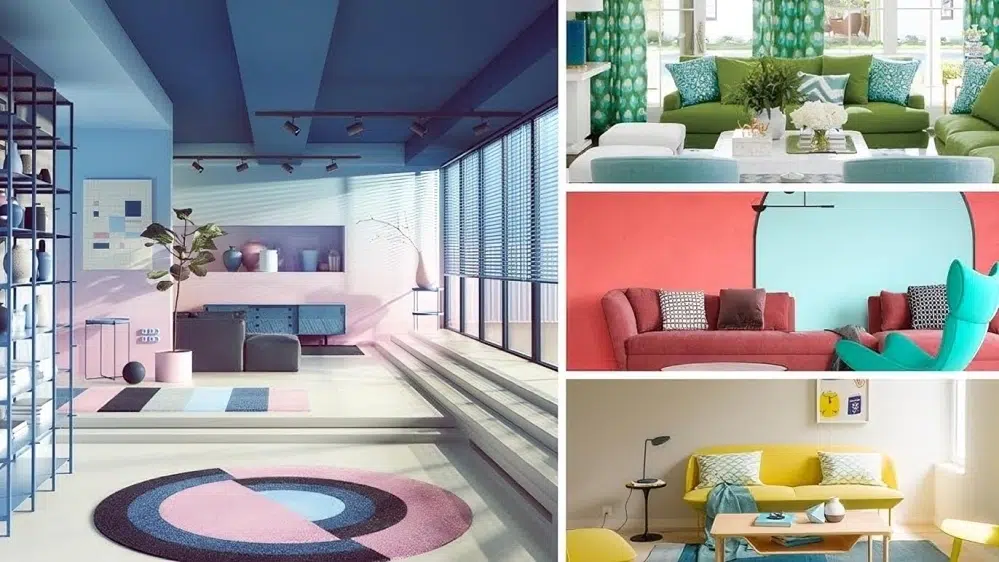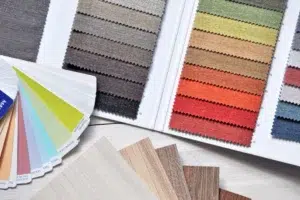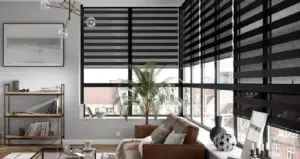Color has a remarkable ability to influence the ambiance and emotional tone of your home. By tapping into the psychology of color and using it thoughtfully, you can turn your living spaces into places that feel warm, welcoming, and perfectly suited to your emotional needs.
What is Color Psychology?
Color psychology explores how colors affect our feelings, moods, and even behavior. Each color brings its own set of emotional triggers and can shape the overall vibe of a space. When you choose colors carefully, you can influence how people feel in your home, making it a more enjoyable and harmonious environment.
Why Does Color Psychology Matter in Home Décor?
- Emotional Impact: Colors can stir up a range of emotions, from excitement and enthusiasm to peace and relaxation. Knowing the emotional power behind colors allows you to create spaces that reflect how you want to feel or how you want your guests to feel.
- Mood Boosting: The right choice of colors can lift your spirits and contribute to your well-being, turning your home into a personal retreat where you feel comfortable and at ease.
- Space Perception: Colors also play a key role in how we perceive the dimensions of a room. For instance, lighter shades can make a small room feel airy and open, while darker tones create a cozy, intimate atmosphere.
- Self-Expression: Your color choices say a lot about who you are. By selecting colors that resonate with your taste, you create a home that truly reflects your individuality.
Understanding How Different Colors Affect Your Space
Red in Your Home
- Why Choose Red: Red is bold, full of energy, and often associated with passion and intensity. It’s a vibrant color that instantly brings a sense of excitement into any room.
- Feelings It Evokes: Red is known for sparking emotions like love, power, and enthusiasm.
- Where to Use It: Consider using red in spaces where you want to keep energy levels high, like the living room, dining area, or even a home office where you need to stay motivated.
White in Your Home
- Why Choose White: White is timeless and adaptable, bringing a sense of clarity and purity into your space. It works well to create a feeling of calm and simplicity.
- Feelings It Evokes: White tends to make people feel serene, peaceful, and organized.
- Where to Use It: White is perfect for bedrooms, bathrooms, or any room where you want a clean, fresh, and minimalist look.
Purple in Your Home
- Why Choose Purple: Purple exudes a sense of royalty, luxury, and depth. It’s a color that speaks to creativity and spirituality, often adding a unique flair to any space.
- How it Feels: Purple can inspire feelings of wisdom, mystery, and imagination.
- Best Places for Purple: Think about using purple in spaces where you want to promote calm and creativity, such as a home office, a quiet library, or even a meditation area. It creates an environment perfect for thoughtful reflection or artistic expression.
Brown in Your Home
- Why Choose Brown: Brown is a natural, earthy color that feels solid and dependable. It brings a sense of stability and warmth to a room, making it feel grounded and secure.
- How it Feels: Brown evokes warmth, comfort, and a connection to nature. It’s a color that invites people to relax and feel at home.
- Best Places for Brown: Consider using brown in spaces like the living room, dining room, or bedroom—places where you want to cultivate a cozy, inviting atmosphere that encourages relaxation and togetherness.
Black in Your Home
- Why Choose Black: Black is bold, dramatic, and effortlessly stylish. It adds a touch of sophistication and can create an atmosphere of power and mystery.
- How it Feels: Black can make a space feel elegant and luxurious, giving it a sense of grandeur and depth.
- Best Places for Black: Use black sparingly, as an accent color for walls, furniture, or décor. A black accent wall or sleek black furniture can make a powerful, stylish statement in any room.
How to Choose Colors That Match Your Home
- Think About Your Style: Before selecting colors, consider the overall style of your home. Whether you lean towards modern, traditional, or rustic designs, choose colors that work with that theme.
- Create a Color Palette: Build a balanced palette by selecting your main colors, their complementary shades, and a few accent hues. This will help maintain harmony throughout the space.
- Follow the 60-30-10 Rule: This decorating principle suggests using a dominant color for 60% of the room (walls, large furniture), a secondary color for 30% (smaller furnishings or upholstery), and an accent color for the remaining 10% (pillows, artwork, accessories).
- Test Colors First: Don’t just pick a color and run with it. Use paint swatches or fabric samples to see how the colors will look in your room before committing.
- Check the Lighting: Natural light can drastically change how a color appears. Make sure to test colors at different times of the day to ensure they look the way you want.
Conclusion
Understanding color psychology gives you the ability to craft living spaces that feel right, emotionally and aesthetically. By using colors that speak to you and your style, you can create a home that is not only beautiful but also deeply personal and inviting. Play around with different colors, and explore unique combinations, and you’ll eventually find a palette that reflects your personality and turns your house into a sanctuary.
FAQs
- What’s the best color for a bedroom?
- Calming tones like blue, green, or lavender are great for bedrooms because they promote relaxation and rest.
- Can I use bright colors in small rooms?
- Absolutely! Just be careful not to overdo it—too much brightness can make a small space feel cluttered. Use pops of color instead of filling the entire room with bold shades.
- How should I choose furniture colors?
- Look at the overall color scheme of the room and try to complement or contrast the furniture in a way that adds visual interest without clashing.
- Can I change the look of a room without repainting?
- Yes! Add colorful accessories like rugs, pillows, curtains, or artwork to bring life into a space without going through the trouble of repainting.
- What’s an easy way to introduce color into my decor?
- Start small—use pillows, art, or rugs to add touches of color. As you get more comfortable, you can introduce bigger pieces like furniture or even paint an accent wall.





